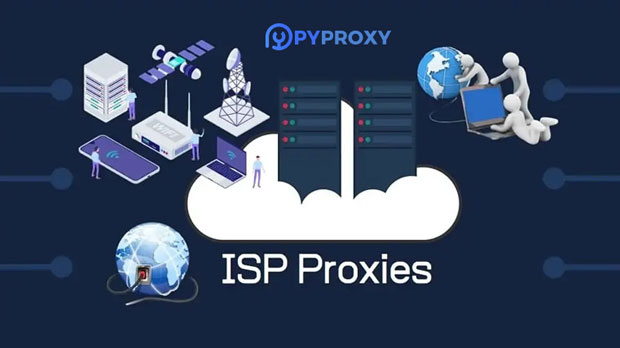Is Business Proxies Rotating Residential Proxy good for long term use? How does it compare to PyProxy?
When evaluating proxy solutions for long-term use, two prominent services often come up for comparison: Business Proxies rotating residential proxies and PYPROXY. These services offer unique advantages and drawbacks depending on usage scenarios. Business Proxies, known for their rotating residential proxies, are designed to provide a high level of anonymity and security, making them a popular choice for various online activities. However, the question arises whether they are truly suitable for prolonged, continuous use. Similarly, PyProxy provides a different approach to proxy services, with its own features and benefits. This article will dive deep into comparing the two, highlighting their strengths, weaknesses, and which one stands out for long-term use. Understanding Rotating Residential ProxiesRotating residential proxies are a key feature offered by Business Proxies. These proxies constantly change the IP address assigned to the user, which helps to mask the user's real location and identity. Residential proxies differ from datacenter proxies in that they use real IP addresses provided by Internet Service Providers (ISPs) rather than those generated from data centers. The rotating nature ensures that the user can maintain a low risk of detection, especially for tasks that involve a high volume of requests, such as web scraping, data collection, or online marketing.The ability to rotate IPs automatically over a given time period or after each request is what makes these proxies highly beneficial for anonymity and protection against IP bans or CAPTCHAs. This feature is particularly useful for long-term operations where maintaining anonymity is critical.Benefits of Business Proxies' Rotating Residential ProxiesBusiness Proxies’ rotating residential proxies come with several advantages:1. High Anonymity and Security: The rotation feature minimizes the risk of detection. Since each request is routed through a different IP, it becomes much harder for websites to track the user’s activities or identify their origin. This feature is particularly useful for scraping, data mining, and conducting competitive analysis where maintaining privacy is crucial.2. Access to Geo-Specific Content: Residential proxies often provide better access to geo-blocked content. By using a large pool of residential IPs from different locations worldwide, users can access region-restricted content more efficiently. For long-term users, this can be advantageous for businesses targeting global markets or individuals who need to bypass location-based content restrictions.3. Reduced IP Bans: The rotating nature of the proxies helps in avoiding IP bans, which are a common challenge when performing bulk actions like web scraping. Without a rotating mechanism, websites might detect patterns and block the IP. The constant change of IP addresses helps to avoid such blocks, making it a good option for long-term use.4. Scalability: For businesses that need to scale their operations, such as large-scale data gathering, rotating residential proxies can support continuous growth without compromising performance or efficiency. The scalability of Business Proxies allows it to cater to both small businesses and large enterprises with high demands.Challenges of Business Proxies' Rotating Residential ProxiesHowever, despite its advantages, there are some challenges associated with rotating residential proxies:1. Higher Costs: Rotating residential proxies tend to be more expensive than datacenter proxies. The cost is often reflective of the quality of service, but businesses and individuals with tight budgets may find this a limiting factor for long-term use.2. Speed Issues: Since residential IPs are used, they can be slower than datacenter proxies, especially when using IPs from less optimized or less reliable ISPs. The constant rotation might also lead to occasional instability, which could affect time-sensitive tasks.3. Limited Control: With rotating proxies, users typically have limited control over the IPs assigned. For certain operations where a stable IP address is necessary, this might pose a challenge. Users may prefer static proxies if they require a persistent IP address.What is PyProxy and How Does it Compare?PyProxy, a lesser-known proxy service, offers a different approach compared to rotating residential proxies. PyProxy primarily focuses on providing reliable, customizable proxies suited for a range of activities like web scraping, automation, and data gathering. However, it does not offer the same rotating residential proxy system that Business Proxies does.1. Proxy Type: Unlike Business Proxies’ residential proxy rotation, PyProxy primarily offers datacenter proxies. These proxies tend to be faster and more affordable than residential ones but lack the anonymity and geo-specific advantages that come with residential IPs. They also carry a higher risk of detection and blocking.2. Speed: PyProxy’s datacenter proxies often provide faster speeds compared to the rotating residential proxies offered by Business Proxies. For users who require quick responses, such as for e-commerce or rapid data extraction, PyProxy may be more suitable. However, this comes at the cost of reduced privacy and an increased likelihood of being flagged by websites.3. Pricing: In terms of pricing, PyProxy tends to be more affordable than rotating residential proxies. For those on a tight budget, it might be the better option, especially for short-term or one-off projects. However, when it comes to long-term operations requiring anonymity and the ability to bypass geo-blocks, Business Proxies offers more value.Is Business Proxies Suitable for Long-Term Use?Considering the features of Business Proxies and PyProxy, Business Proxies’ rotating residential proxies are well-suited for long-term use, especially for tasks that require high levels of privacy, scalability, and reliability. The ability to rotate IP addresses continuously ensures that users maintain anonymity, bypass IP bans, and access geo-restricted content without risking detection.For businesses involved in activities such as web scraping, competitive intelligence, or global marketing, Business Proxies offers a solution that can scale as needed. The only significant downside is the higher cost compared to PyProxy, but this is often justified by the increased security and functionality it provides.In comparison, PyProxy’s datacenter proxies may be more affordable, but they do not offer the same level of privacy or geo-targeting capabilities. Therefore, while PyProxy can serve well for short-term projects or for users looking to minimize costs, Business Proxies is the better choice for long-term operations that require robustness, anonymity, and scalability.In conclusion, Business Proxies’ rotating residential proxies are indeed suitable for long-term use, especially for individuals and businesses that prioritize privacy, anonymity, and the ability to scale operations. While the cost may be higher, the benefits of reduced IP bans, enhanced security, and better geo-location coverage make it a strong contender for anyone looking for a reliable proxy solution for extended periods.On the other hand, PyProxy may offer a more cost-effective solution with faster speeds but is less ideal for long-term use where privacy and avoiding detection are critical. Businesses or users looking for an affordable short-term solution may find PyProxy useful, but for continuous and high-demand operations, Business Proxies will likely be the better fit.
2025-02-25

























































